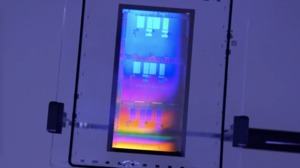Intel could envision license manufacturing in its own factories
Source: Hardware Luxx added 12th Jan 2021Only a few days ago the message surfaced that Intel was in further negotiations with TSMC to get manufacturing capacities for 2022 / 23. Initial negotiations have also started with Samsung. As part of yesterday’s presentation of Tiger Take-H (for notebooks), Rocket Lake-S (as the next desktop generation), Amber Lake (hybrid design for the next desktop and mobile generation) and Jaspar Lake (Pentium and Celeron processors) and the announcement of Ice Lake-SP for servers, Intel’s CEO Bob Swan gave an interview (including Anandtech) to some US colleagues and made some interesting statements.
So Intel will start manufacturing the Xe-Link and I / O tiles and the gaming GPU based on the Xe-HPG architecture at TSMC this year. But as already mentioned several times, Intel already has part of its chip manufactured by TSMC – although there are no larger volumes for the processors.
Swan initially rejects a possible sale of the manufacturing factories. This was requested by some investors, among others. But one could imagine licensing a third-party manufacturing process from TSMC or Samsung and then applying this to one’s own manufacturing. GlobalFoundries proceeded in a similar way, when the 14 – nm process from Samsung. Such a measure could buy Intel some time in order to then rely completely on its own technologies with 5 nm (or a comparable production size).
Outsourcing of larger volumes rather unlikely
Which way Intel will go now will probably be announced when the quarterly figures are announced at the end of January. Based on the statements of Bob Swan, however, it is most likely that Intel will keep its own factories and use a licensing model to create the time for a restart.
It is unlikely that Intel will have (further) larger ones Volume to TSMC will be able to transfer. The capacities of the Taiwanese manufacturer are too full for this and will continue to be so in the years to come. Apple is a premium customer who also has the necessary financial resources to outperform any competitor on manufacturing capabilities. In the coming years Apple will also secure large parts of the production in 5 nm and more advanced technologies.
With its production volume, Intel would certainly be able to bring TSMC to its capacity limits and this is exactly what it is is the sticking point at this point: TSMC will not be able to provide the necessary resources – especially not because it is only a temporary expansion of the partnership. Now to build up resources, which are then obsolete from 2023, should also not in the interests of TSMC.
At the end of January, Intel will inform its customers, but above all its investors, about the path to take in production in the next two to three years.
